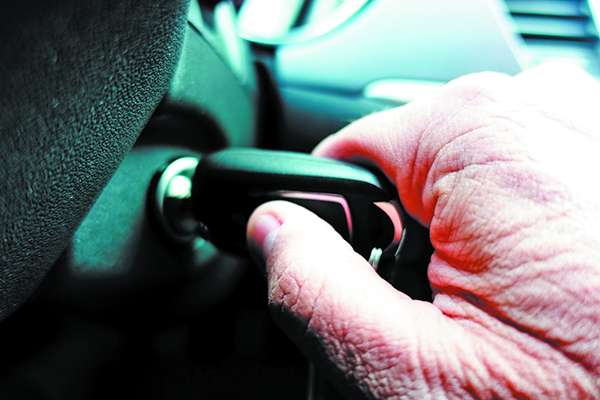It’s now easy to take care of your health needs on your own…
Where do you plan to live during your retirement years—including your latest years? If you’re like most people, you want to stay right at home.
But that doesn’t work for everyone. People with chronic illnesses and/or physical disabilities may end up moving into assisted-living facilities or nursing homes—and often sooner than they had hoped.
Now: High-tech devices can help you stay in your home much longer than before (even if you live alone) while also giving loved ones the assurance that you are safe.
To stay at home as long as possible, people have traditionally installed ramps, grab bars, brighter lighting and other such products to accommodate their changing needs. But that doesn’t scratch the surface of what’s available today.
Impressive high-tech devices to help you stay at home as you age…
“CHECKUPS” AT HOME
There’s now an easy way to quickly alert your doctor of important changes in your health that may be occurring between office visits.
What’s new: Remote patient monitoring. You can use an at-home glucose monitor, weight scale, pulse oximeter (to measure oxygen in the blood) and other devices that store readings, which you can then easily share with your doctor—on a daily, weekly or monthly basis, depending on your condition and how well you’re responding to treatments.
Example: A wireless glucose monitor, such as the iHealth Align ($16.95, without test strips), available at iHealthLabs.com. It works with a smartphone to take glucose readings and automatically log/track measurements over time and send them to the doctor.
In development: Systems with wearable sensors that automatically take and transmit important readings. A steering wheel that measures blood glucose? Watch for that too in the next few years!
Fall Monitors Go High-Tech
We’re all familiar with the older fall-monitor systems that require users to press a button on a pendant to initiate communication with a call center. Staffers then contact you (via an intercom-like device) to ask if you need help.
What’s new: Devices that don’t require the push of a button, so fall victims who are immobilized or unconscious also can be helped.
New-generation fall monitors are equipped with accelerometers that can tell when you’ve fallen. The units, worn around the neck, on the wrist or clipped to a belt, contact a call center or a designated caregiver. If you don’t answer a follow-up call, emergency responders will be sent to your address.
Why the new technology is important: Fall victims who receive help within one hour of a fall are six times more likely to survive than those who wait longer.
Examples: Philips Lifeline HomeSafe with AutoAlert (automatic fall detection with push-button backup, 24-hour call center/emergency response) starts at $44.95/month. GoSafe is a wireless version that starts at $54.95/month, plus a onetime GoSafe mobile button purchase of $149. Both are available at LifelineSys.com.
Traditional-style fall monitor: Walgreens Ready Response Vi Alert System (390-foot range, 24-hour call center/emergency response) requires the fall victim to push a button. Available at WalgreensReadyResponse.com for $29.99/month.
ACTIVITY MONITORS
By tracking activity—and noting changes in routines—an off-site loved one or caregiver can tell when you’ve become more or less active or when you’re spending more time in certain parts of the house. A sudden increase in bathroom visits, for example, could indicate a urinary tract infection that hasn’t yet been diagnosed.
What’s new: Sensors that track daily activity—for example, how often refrigerator doors are opened, when the stove is turned on and how often the bathroom is used.
Examples: GrandCare Activity Monitoring System. A caregiver can log in to the system to view activity reports and/or set up “alert parameters” that will trigger a text if there’s no movement at expected times. Available at GrandCare.com $699.99, plus $49.99/month.
A less expensive option is Lively Activity Sensors for Living Independently. Small, disk-shaped sensors are attached to household objects such as the refrigerator and a pillbox. The sensors detect and send text/e-mail notifications when there’s a movement, such as the opening of a refrigerator door. A package of six is available at Amazon.com for $39.95, plus $24.95/month.
How’s Your Walking?
A change in walking speed could indicate that someone has balance problems, muscle weakness or other issues that can interfere with daily living.
What’s new: Wearable devices (available from your doctor or physical therapist) that monitor gait, balance and walking speed. The devices store information that can be electronically transmitted to a doctor or physical therapist.
If walking speed has declined, it could mean that an underlying health problem—such as congestive heart failure—isn’t well-controlled by medication…or that you need physical therapy to increase muscle strength and stamina. Detecting such changes in gait in high-risk patients can allow treatment adjustments that help prevent falls and improve mobility—critical for staying (and thriving) at home.
Examples: StepWatch from Modus Health straps onto your ankle and has 27 different metrics to measure gait and speed. Available at ModusHealth.com. LEGSys from Biosensics includes portable, wireless sensors that analyze gait and generate easy-to-read reports. It’s easy to put on with a Velcro strap. Available at Biosensics.com/LEGSys-overview.



